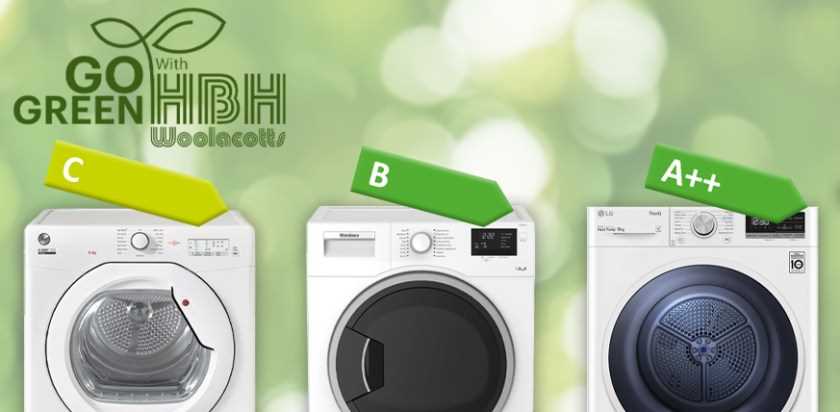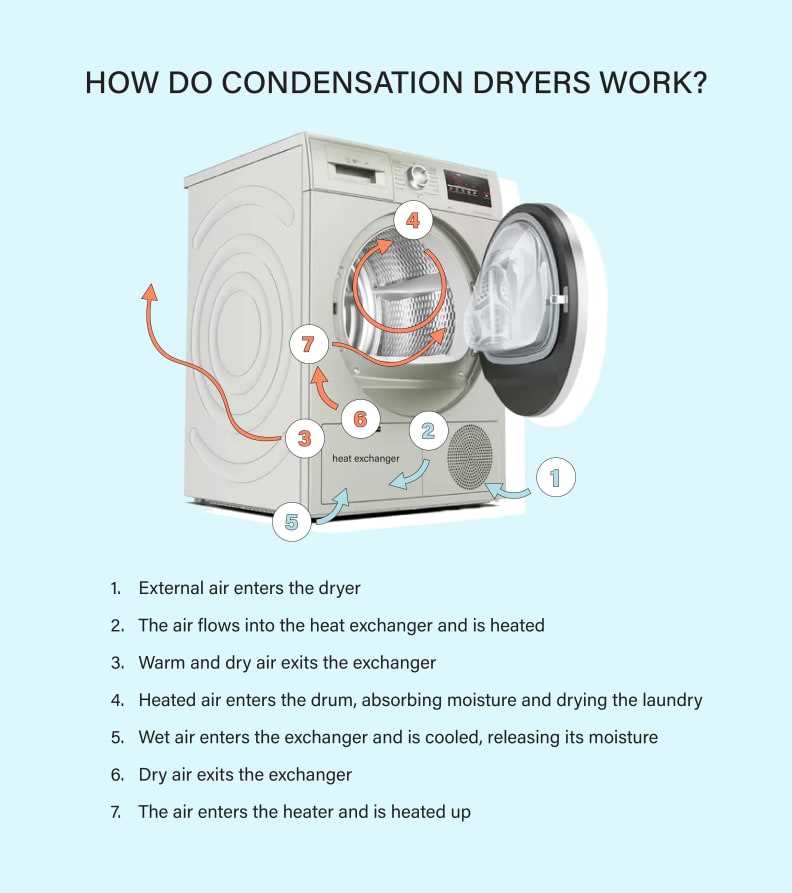




When it comes to choosing a washer dryer, one of the key considerations is whether it is vented or condensing. While both types have their advantages and disadvantages, understanding the differences between them can help you make an informed decision for your home. In this article, we will explain the basics of vented and condensing washer dryers so that you can choose the option that best suits your needs.
Vented washer dryers are the traditional type, which are designed to expel hot air and moisture through a vent or a pipe. This means that they need to be installed near an external wall or have a suitable outlet for the exhaust air. The main advantage of vented washer dryers is that they tend to be more efficient at drying clothes, as the moisture is expelled directly outside. However, the downside is that they require proper installation and may not be suitable for all homes, especially those without direct access to an external wall.
On the other hand, condensing washer dryers do not require any external vent or pipe. They work by collecting the moisture from the drying process and turning it into water, which is then stored in a container or pumped out through a plumbing system. This means that you have more flexibility in terms of where you can install the appliance, as it doesn’t require a direct connection to the outside. However, condensing washer dryers may take longer to dry clothes and may not be as energy efficient as their vented counterparts.
Overall, the choice between a vented or condensing washer dryer depends on your specific needs and the limitations of your home. If you prioritize efficient drying and have the necessary infrastructure for a vented appliance, then a vented washer dryer may be the best option for you. However, if you value flexibility in installation and don’t have access to an external wall, a condensing washer dryer could be the more practical choice. Whichever type you choose, it’s important to consider factors such as energy efficiency, capacity, and other features to ensure that you get the most out of your washer dryer.
Are Washer Dryers Vented or Condensing? Explained

In the world of laundry appliances, there are two main types of washer dryers: vented and condensing. These terms refer to how the dryer portion of the appliance deals with moisture.
Vented Washer Dryers

Vented washer dryers are designed to expel the moisture created during the drying process through a vent or an exhaust pipe. This venting system allows for the moist air to be released outside the home, which can help prevent excessive moisture and humidity buildup inside.
To use a vented washer dryer, you will need to connect it to a vent or exhaust pipe that leads outside. This requires proper installation and positioning of the appliance near a suitable venting location.
One of the advantages of vented washer dryers is that they tend to be more efficient in terms of drying time and energy consumption. The moisture is simply expelled outside, so there is no need for the appliance to go through a condensing process.
However, the disadvantage of vented washer dryers is that they require a suitable venting location and proper installation. If you don’t have access to a vent or exhaust pipe, or if your home’s layout makes it difficult to vent the moisture outside, a vented washer dryer may not be a suitable option for you.
Condensing Washer Dryers

Condensing washer dryers, on the other hand, do not require a vent or exhaust pipe to expel moisture. Instead, they use a condensing process to remove the moisture from the air inside the appliance.
Condensing washer dryers have a built-in condenser that cools down the warm, moist air inside the appliance, causing the moisture to condense into water. This water is then collected in a tray or tank, which needs to be emptied regularly.
The advantage of condensing washer dryers is that they offer more flexibility in terms of installation. Since they don’t require a vent or exhaust pipe, they can be placed in any location with access to a water supply and a drain for the condensed water.
However, condensing washer dryers may take longer to dry clothes compared to vented models, and they may consume more energy in the condensing process.
Conclusion

In summary, washer dryers can be either vented or condensing. Vented models require a suitable venting location and installation, but they tend to be more efficient in terms of drying time and energy consumption. Condensing models, on the other hand, offer more flexibility in terms of installation but may take longer to dry clothes and consume more energy.
When choosing between a vented or condensing washer dryer, consider factors such as the availability of a suitable venting location, your home’s layout, and your drying needs to make the best decision for your laundry setup.
How do Vented Washer Dryers Work?

Vented washer dryers work by expelling hot and damp air from the drying process through a vent or hose. This type of washer dryer requires a ventilation system to be installed in your laundry area.
Here is how a vented washer dryer operates:
- Washing: Similar to a regular washing machine, a vented washer dryer begins by washing your clothes with water and detergent. The dirty water is then drained out.
- Drying: Once the clothes are clean, the drying cycle begins. The washer dryer heats the air inside the drum and rapidly spins the clothes to remove moisture.
- Venting: During the drying process, the hot and damp air is expelled through a vent or hose. This vent leads to the outside of your home, allowing the moist air to escape.
- Exhaust fan: Some vented washer dryers might have an exhaust fan that helps in expelling the hot air more efficiently. This fan also helps in preventing the build-up of excess moisture and reducing the drying time.
It is important to note that vented washer dryers require proper ventilation to prevent the accumulation of moisture and humidity in your laundry area. The vent or hose should be properly installed to ensure the efficient and safe operation of the appliance.
Overall, vented washer dryers work by using a vent or hose to expel hot and moist air from the drying process, providing effective drying results.
The Advantages of Vented Washer Dryers

- Vented washer dryers offer faster drying times compared to condensing models. This is because the hot air is expelled through a vent, allowing for more efficient drying.
- Vented washer dryers tend to have larger drying capacities, making them suitable for households with a higher laundry demand.
- These models often have a lower upfront cost compared to condensing washer dryers, making them a more affordable option for those on a budget.
- Vented washer dryers do not require an additional water supply for the drying process, unlike condensing models.
- The venting system in these machines helps to remove excess humidity from the laundry area, minimizing the likelihood of mold or mildew growth.
- Vented washer dryers are generally more energy-efficient, as they use less electricity compared to condensing models that require energy for the condensation process.
The Disadvantages of Vented Washer Dryers

- Vents need to be properly installed: One of the main disadvantages of vented washer dryers is that they require proper installation of vents. These vents need to be connected to an external wall or a window, allowing the moist air to be vented outside. This installation process can be complicated and may require professional help.
- Space restrictions: Vented washer dryers also require a suitable space for installation. Since vents need to be connected to an external source, you need to ensure that there is enough space near a wall or window. This can be challenging in smaller apartments or homes with limited space.
- Not suitable for all locations: In some cases, vented washer dryers may not be suitable for certain locations. For example, if your laundry area is located in the middle of your home and there is no access to an external wall or window, installing vents could be difficult or even impossible.
- Energy efficiency: Vented washer dryers are generally less energy efficient compared to condensing models. This is because the warm air that is expelled through the vents also takes away some of the heat energy, resulting in higher energy consumption and potentially higher electricity bills.
- Higher risk of lint buildup: Since vented washer dryers expel moist air through vents, there is a higher risk of lint buildup in the vents. This can reduce the efficiency of the venting system and potentially cause blockages. Regular cleaning and maintenance of the vents are necessary to prevent these issues.
- May not be suitable for rental properties: If you live in a rental property, the installation of vents for a vented washer dryer may not be allowed or approved by the landlord. In such cases, you may need to consider using a condensing washer dryer instead, which doesn’t require the installation of vents.
How do Condensing Washer Dryers Work?

Condensing washer dryers are a type of combination appliance that can wash and dry clothes in a single cycle. Unlike vented dryer models, condensing washer dryers do not require an external ventilation system to expel moist air. Instead, they use a condensing system to remove moisture from the air inside the machine.
Here’s a step-by-step breakdown of how condensing washer dryers work:
- Washing: First, the washer dryer fills the drum with water and detergent to wash the clothes. The drum rotates, agitating the clothes and cleaning them.
- Rinsing: After the washing cycle completes, the washer dryer drains the dirty water and refills the drum with clean water to rinse the clothes.
- Spinning: Once the clothes are rinsed, the machine spins the drum at high speeds to remove excess water from the clothes. This step helps reduce drying time.
- Drying: During the drying process, the washer dryer heats the air inside the drum. The hot air absorbs moisture from the clothes, causing the water to vaporize.
- Condensing: As the hot, moisture-laden air circulates inside the machine, it comes into contact with a condenser unit. The condenser cools the air, causing the moisture to condense into water droplets.
- Collecting: The condensed water is collected in a reservoir or drained out through a hose. Some models may have a self-cleaning condenser, while others require manual cleaning.
- Repeat Drying: The drying process continues until the clothes reach the desired level of dryness. The condensing washer dryer may have different drying settings that allow you to choose the dryness level.
- Cooling Down: Once the drying cycle is complete, the machine engages a cool-down phase. This reduces the temperature inside the drum and helps prevent possible damage to the clothes.
- Finished: Finally, the clothes are ready to be removed from the drum. They should be dry and ready to wear or be folded and stored.
Condensing washer dryers offer a convenient all-in-one solution for those who have limited space and do not have the option to install a vented dryer. The condensing mechanism efficiently removes moisture from the air, allowing for clothes to be dried without the need for external venting.
The Advantages of Condensing Washer Dryers
Condensing washer dryers have become increasingly popular in recent years, and for good reason. These innovative appliances offer a range of advantages over traditional vented dryer models. Here are some of the key advantages of condensing washer dryers:
- No need for external venting: One of the main advantages of condensing washer dryers is that they do not require an external vent to expel moist air. This means that they can be installed anywhere in your home, without the need for complicated ductwork.
- Flexible installation options: Because condensing washer dryers don’t need to be vented, you have much more flexibility in where you can install them. You can place them in your kitchen, bathroom, or even a closet, as long as there is a water source and a drain nearby.
- Energy efficiency: Another advantage of condensing washer dryers is their energy efficiency. These appliances use less energy compared to vented dryers, as they recycle the hot air inside the drum to dry your clothes. This not only helps reduce your energy bills but also reduces your carbon footprint.
- Gentler on clothes: Condensing washer dryers are generally gentler on clothes compared to vented dryers. The absence of hot air blowing directly onto your clothes helps prevent shrinkage and damage, making them ideal for delicate fabrics or items that require special care.
- Less risk of fire hazards: Vented dryers can pose a fire risk if lint builds up in the vents. With condensing washer dryers, there is no need for external venting, reducing the risk of lint buildup and potential fire hazards.
- Multiple drying options: Many condensing washer dryer models offer a variety of drying options, allowing you to customize the drying cycle based on your specific needs. These options can include different temperature settings, drying times, and sensor-based moisture detection.
- Easy maintenance: Maintaining a condensing washer dryer is generally easier compared to vented dryers. Without the need for external venting, you don’t have to worry about cleaning or maintaining vents. Regular cleaning of the lint filter and moisture condenser is usually sufficient to keep the appliance in good working condition.
Overall, condensing washer dryers offer numerous advantages, from flexibility in installation to energy efficiency and gentler drying. If you’re in the market for a new washer dryer, considering a condensing model could be a smart choice.
FAQ
Are washer dryers vented or condensing?
Washer dryers can be either vented or condensing, depending on the model and type.
What is the difference between vented and condensing washer dryers?
The main difference between vented and condensing washer dryers is how they handle moisture. Vented washer dryers expel hot air and moisture through a vent, while condensing washer dryers convert moisture into water and collect it in a container.
Which type of washer dryer is better, vented or condensing?
The choice between vented and condensing washer dryers depends on your specific needs and the setup of your home. Vented models tend to be more efficient and dry clothes faster, but require a venting system. Condensing models, on the other hand, can be installed anywhere as they don’t need a vent, but may take longer to dry clothes.
Can I convert a vented washer dryer into a condensing one?
No, you cannot convert a vented washer dryer into a condensing one. The two types operate differently and have different internal components.











